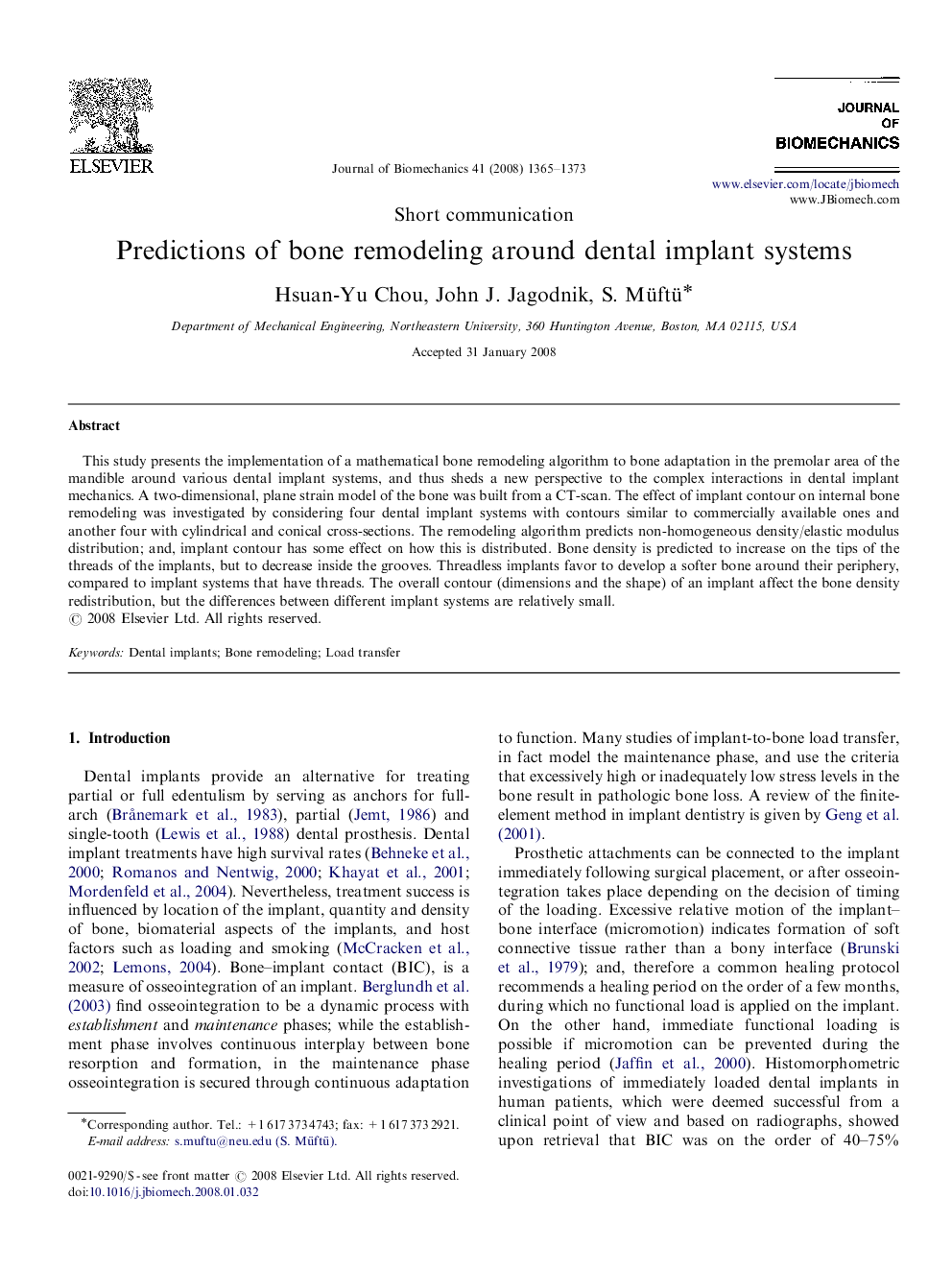| Article ID | Journal | Published Year | Pages | File Type |
|---|---|---|---|---|
| 873275 | Journal of Biomechanics | 2008 | 9 Pages |
This study presents the implementation of a mathematical bone remodeling algorithm to bone adaptation in the premolar area of the mandible around various dental implant systems, and thus sheds a new perspective to the complex interactions in dental implant mechanics. A two-dimensional, plane strain model of the bone was built from a CT-scan. The effect of implant contour on internal bone remodeling was investigated by considering four dental implant systems with contours similar to commercially available ones and another four with cylindrical and conical cross-sections. The remodeling algorithm predicts non-homogeneous density/elastic modulus distribution; and, implant contour has some effect on how this is distributed. Bone density is predicted to increase on the tips of the threads of the implants, but to decrease inside the grooves. Threadless implants favor to develop a softer bone around their periphery, compared to implant systems that have threads. The overall contour (dimensions and the shape) of an implant affect the bone density redistribution, but the differences between different implant systems are relatively small.
